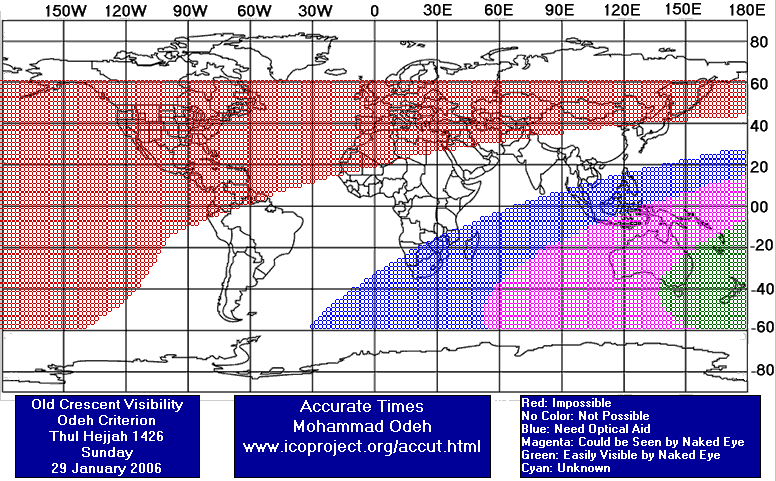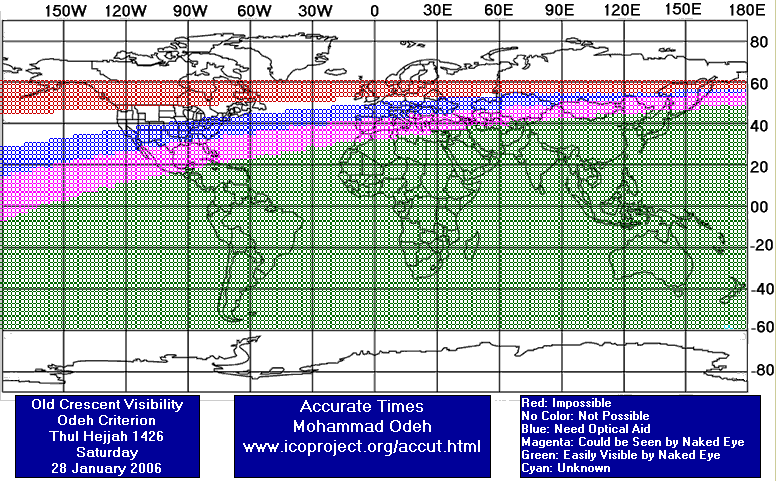Visibility of Muharram Crescent
(1427 AH)
- When to Observe Muharram Waxing (NEW) Crescent ?
- Muharram Waxing (NEW) Crescent Observation Results
- ICOP Official Statement (Beginning of Muharram)
- The OFFICIAL First Day in Different Countries
- When to Observe Thul Hijjah (OLD) Crescent ?
- Thul Hijjah Waning (OLD) Crescent Observation Results
The geocentric conjunction (Geocentric New Moon) will occur Inshalla on (Sunday 29 January 2006), at
14:15 UT.
Sighting the new crescent on (Sunday 29 January 2006) and on (Monday 30 January 2006) is shown in the below graphs using the program Accurate Times by Mohammad Odeh according to Odeh criterion. Where:-
According to the actual sighting of the crescent, the start of Muharram should be on Tuesday 31 January 2006 in most parts of the world.
- Results of seeing the crescent, and the first day of the month in different countries will be added here Inshalla as we receive the reports from ICOP's members. If you wish to be a member in ICOP, or to know more about it, kindly click here.
So far, the earliest sighting of the crescent was on Monday 30 January 2006 from Iraq by ICOP member Mr. Bacil Moudhaffar, the crescent was also seen on this day from Saudi, Algeria, Morocco, South Africa Germany and USA.
Sunday 29 January 2006:
Monday 30 January 2006:
Kindly Click Here to read the ICOP official statement regarding the beginning of Muharram 1427 AH.
Monday 30 January 2006 :
Tuesday 31 January 2006 :
The geocentric conjunction (Geocentric New Moon) will occur Inshalla on (Sunday 29 January 2006), at
14:15 UT.
Sighting the OLD crescent on (Sunday 29 January 2006) and on (Saturday 28 January 2006) is shown in the below graphs using the program Accurate Times by Mohammad Odeh according to Odeh criterion. Where:-
When to Observe Muharram Waxing (NEW) Crescent ?



Muharram Waxing (NEW) Crescent Observation Results

ICOP Official Statement (Beginning of Muharram)

The OFFICIAL First Day in Different Countries

When to Observe Thul Hijjah Waning (OLD) Crescent ?







